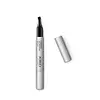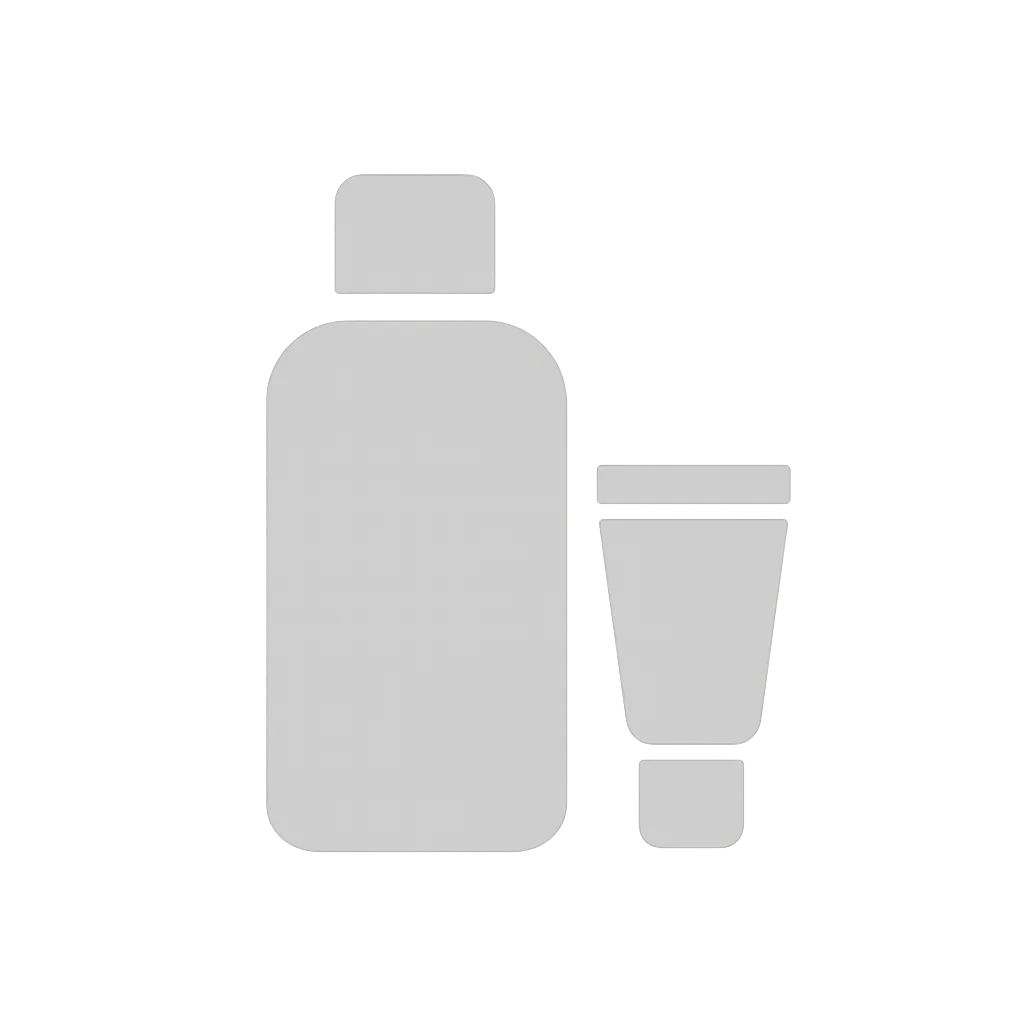What's inside
What's inside
 Key Ingredients
Key Ingredients

 Benefits
Benefits

 Concerns
Concerns

 Ingredients Side-by-side
Ingredients Side-by-side

Water
Skin ConditioningDimethicone
EmollientOryza Sativa Starch
AbsorbentButylene Glycol
HumectantPolymethylsilsesquioxane
Glycerin
HumectantSqualane
EmollientDimethicone Crosspolymer
Emulsion StabilisingPhenoxyethanol
PreservativeLaureth-4
EmulsifyingEthylhexylglycerin
Skin ConditioningHydroxyethylcellulose
Emulsion StabilisingChlorphenesin
AntimicrobialCarbomer
Emulsion StabilisingArgania Spinosa Kernel Oil
EmollientDisodium EDTA
Glycogen
HumectantSodium Hydroxide
BufferingHydrolyzed Rhodophyceae Extract
Dextran
Acetyl Tetrapeptide-3
Skin ProtectingTrifolium Pratense Flower Extract
AstringentWater, Dimethicone, Oryza Sativa Starch, Butylene Glycol, Polymethylsilsesquioxane, Glycerin, Squalane, Dimethicone Crosspolymer, Phenoxyethanol, Laureth-4, Ethylhexylglycerin, Hydroxyethylcellulose, Chlorphenesin, Carbomer, Argania Spinosa Kernel Oil, Disodium EDTA, Glycogen, Sodium Hydroxide, Hydrolyzed Rhodophyceae Extract, Dextran, Acetyl Tetrapeptide-3, Trifolium Pratense Flower Extract
Water
Skin ConditioningGlycerin
HumectantNeopentyl Glycol Dicaprylate/Dicaprate
EmollientCyclomethicone
EmollientCetearyl Alcohol
EmollientCeteareth-20
CleansingCaffeine
Skin ConditioningGlycyrrhiza Glabra Root Extract
BleachingPolyacrylamide
Phenoxyethanol
PreservativeVitis Vinifera Seed Oil
EmollientDimethicone
EmollientButylene Glycol
HumectantCetyl Alcohol
EmollientOctyldodecanol
EmollientC13-14 Isoparaffin
EmollientDimethicone Crosspolymer
Emulsion StabilisingArgania Spinosa Kernel Oil
EmollientTocopheryl Acetate
AntioxidantDisodium EDTA
Ethylhexylglycerin
Skin ConditioningLaureth-7
EmulsifyingCarbomer
Emulsion StabilisingPolysorbate 20
EmulsifyingSodium Hydroxide
BufferingPalmitoyl Tripeptide-1
Skin ConditioningPalmitoyl Tetrapeptide-7
Skin ConditioningWater, Glycerin, Neopentyl Glycol Dicaprylate/Dicaprate, Cyclomethicone, Cetearyl Alcohol, Ceteareth-20, Caffeine, Glycyrrhiza Glabra Root Extract, Polyacrylamide, Phenoxyethanol, Vitis Vinifera Seed Oil, Dimethicone, Butylene Glycol, Cetyl Alcohol, Octyldodecanol, C13-14 Isoparaffin, Dimethicone Crosspolymer, Argania Spinosa Kernel Oil, Tocopheryl Acetate, Disodium EDTA, Ethylhexylglycerin, Laureth-7, Carbomer, Polysorbate 20, Sodium Hydroxide, Palmitoyl Tripeptide-1, Palmitoyl Tetrapeptide-7
Ingredients Explained
These ingredients are found in both products.
Ingredients higher up in an ingredient list are typically present in a larger amount.
You may know this ingredient as argan oil. Argan Oil has antioxidant, hydrating, and soothing properties.
Studies have shown argan oil can help fight again radical damage from the sun. This makes it effective at preventing hyperpigmentation.
Large amounts of vitamin E found in argan oil helps the skin retain water. Argan oil also contains fatty acids such as linoleic acid, oleic acid, and palmitic acid. It is also a good source of lipids.
Another benefit of argan oil is skin-soothing. It can help reduce inflammation-related skin symptoms.
Argan Oil is effective at regulating sebum production in pores. This can make it effective at treating hormonal acne.
Traditionally, argan oil was used for its antibacterial and antifungal properties. However, argan oil contains fatty acids that may make it not fungal-acne safe.
Argan Trees are native to Morocco.
Learn more about Argania Spinosa Kernel OilButylene Glycol (or BG) is used within cosmetic products for a few different reasons:
Overall, Butylene Glycol is a safe and well-rounded ingredient that works well with other ingredients.
Though this ingredient works well with most skin types, some people with sensitive skin may experience a reaction such as allergic rashes, closed comedones, or itchiness.
Learn more about Butylene GlycolCarbomer is a polymer of acrylic acid. Its main role is to create a gel consistency.
A high amount of carbomer can cause pilling or balling up of products. Don't worry, most products contain 1% or less of carbomer.
Dimethicone is a type of synthetic silicone created from natural materials such as quartz.
What it does:
Dimethicone comes in different viscosities:
Depending on the viscosity, dimethicone has different properties.
Ingredients lists don't always show which type is used, so we recommend reaching out to the brand if you have questions about the viscosity.
This ingredient is unlikely to cause irritation because it does not get absorbed into skin. However, people with silicone allergies should be careful about using this ingredient.
Note: Dimethicone may contribute to pilling. This is because it is not oil or water soluble, so pilling may occur when layered with products. When mixed with heavy oils in a formula, the outcome is also quite greasy.
Learn more about DimethiconeDimethicone Crosspolymer is a silicone created by modifying dimethicone with hydrocarbon side chains. Due to its large size, it does not penetrate skin. It is considered non-occlusive.
Dimethicone Crosspolymer is used to stabilize and thicken products. It also helps give products a silky feel.
Disodium EDTA plays a role in making products more stable by aiding other preservatives.
It is a chelating agent, meaning it neutralizes metal ions that may be found in a product.
Disodium EDTA is a salt of edetic acid and is found to be safe in cosmetic ingredients.
Learn more about Disodium EDTAEthylhexylglycerin (we can't pronounce this either) is commonly used as a preservative and skin softener. It is derived from glyceryl.
You might see Ethylhexylglycerin often paired with other preservatives such as phenoxyethanol. Ethylhexylglycerin has been found to increase the effectiveness of these other preservatives.
Glycerin is already naturally found in your skin. It helps moisturize and protect your skin.
A study from 2016 found glycerin to be more effective as a humectant than AHAs and hyaluronic acid.
As a humectant, it helps the skin stay hydrated by pulling moisture to your skin. The low molecular weight of glycerin allows it to pull moisture into the deeper layers of your skin.
Hydrated skin improves your skin barrier; Your skin barrier helps protect against irritants and bacteria.
Glycerin has also been found to have antimicrobial and antiviral properties. Due to these properties, glycerin is often used in wound and burn treatments.
In cosmetics, glycerin is usually derived from plants such as soybean or palm. However, it can also be sourced from animals, such as tallow or animal fat.
This ingredient is organic, colorless, odorless, and non-toxic.
Glycerin is the name for this ingredient in American English. British English uses Glycerol/Glycerine.
Learn more about GlycerinPhenoxyethanol is a preservative that has germicide, antimicrobial, and aromatic properties. Studies show that phenoxyethanol can prevent microbial growth. By itself, it has a scent that is similar to that of a rose.
It's often used in formulations along with Caprylyl Glycol to preserve the shelf life of products.
Sodium Hydroxide is also known as lye or caustic soda. It is used to adjust the pH of products; many ingredients require a specific pH to be effective.
In small amounts, sodium hydroxide is considered safe to use. However, large amounts may cause chemical burns due to its high alkaline.
Your skin has a natural pH and acid mantle. This acid mantle helps prevent harmful bacteria from breaking through. The acid mantle also helps keep your skin hydrated.
"Alkaline" refers to a high pH level. A low pH level would be considered acidic.
Learn more about Sodium HydroxideWater. It's the most common cosmetic ingredient of all. You'll usually see it at the top of ingredient lists, meaning that it makes up the largest part of the product.
So why is it so popular? Water most often acts as a solvent - this means that it helps dissolve other ingredients into the formulation.
You'll also recognize water as that liquid we all need to stay alive. If you see this, drink a glass of water. Stay hydrated!
Learn more about Water